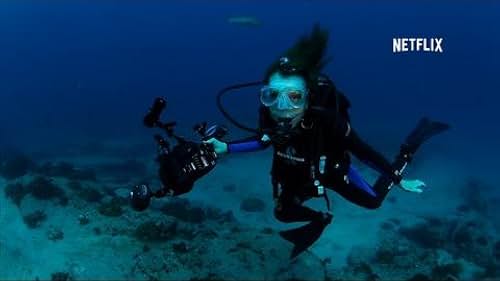Robert Nixon(I)
- Director
- Producer
- Writer

Robert Nixon Filmmaker/Conservationist - Academy Award nominee Robert
Nixon leads film crews to the Earth's furthest corners to capture
compelling stories of tribal peoples, threatened habitats and
endangered species. His captivating films illustrate humankind's
connection to our environment and highlight the urgency of making peace
with nature. In High School, Bob's lifelong dream of becoming an
ornithologist was shattered by an "F" in Biology. Accepting he was not
meant to be a field biologist the ardent young conservationist decided
to become their messenger. Thus began a lifelong quest to use film to
bring to the world the stories of heroic individuals fighting to save
our planet. A fortuitous apprenticeship to legendary British falconer
and wildlife photographer Philip Glasier gave Nixon the skills to
become both a master falconer and filmmaker. The Falconer, the teenage
Nixon's first documentary, centered on Glasier and the Falconry
Center's struggle to breed raptors in captivity. Fifty documentaries
and dramatic films later Nixon's films share trademarks of sync sound
storytelling in extreme locations and stunning cinematography. His
powerful stories have touched and inspired millions and brought crucial
worldwide attention and resources to scientists and species in dire
need. Notable productions include, Amazon Diary, On The Trail of the
Giant Panda, The Last Bushmen, Real Jaws, Ancient Nomads, The End of
the Game, Elephant Diary, If I Can Do This... I Can Do Anything, Last
Word From Paradise, Gorillas In The Mist, America the Beautiful,
Endangered Species, The Last Rivermen, The Lord God Bird, Great White
Highway and American Heroes. In 1980, while shooting the documentary
Fossey's War, Nixon suggested to Dian Fossey that her 15-year battle to
save the Mountain Gorilla from extinction would make a powerful feature
film. Convinced no one would care, Fossey offered to trade her life
story rights for one year of Nixon doing what she termed, "boots on the
ground conservation." Dian was partially right. It was only after her
murder that Gorillas In the Mist was made. Nixon was Co-Producer. After
the film's run Nixon decided to fulfill his promise to Dian by cleaning
up one of the most polluted rivers in America. The Anacostia River runs
through both our Nation's Capital and one of America's most
impoverished and violent neighborhoods. At Valley Green Public Housing
complex Nixon convinced nine young men and women to reclaim the
polluted Anacostia River in their back yard. They called themselves the
Earth Conservation Corps. Two decades later thousands of youth have
engaged in Dian Fossey's model of "boots on the ground conservation."
The river is rebounding but the cost has been crushing. Nixon has
buried twenty-one of his young volunteers, victims of the epidemic
street violence. When the deaths of these youth was not covered in
newspaper, Nixon and the Corps created a youth journalism program to
document their positive contributions. The resulting Earth Conservation
Corps films have spawned a movement of disenfranchised urban youth to
combat poverty, youth violence and environmental injustice. Nixon's
cutting edge contributions in film and conservation have widely
recognized including an Academy Award Nomination, five Emmy Awards, the
President's Service Medal by President Bill Clinton, "Hero of the
Planet" by the National Geographic Society, "Educator of the Year" by
Chesapeake Bay Foundation, by the Walter Cronkite Award and as a
Hometown Hero by WETA. Mr. Nixon's work has been profiled on "Now with
Bill Moyers", "60 Minutes", People Magazine, The Washington Post,
TheNew York Times, ABC World News Tonight, PBS, NPR's All Things
Considered, CBS Morning News, National Geographic Channel and media
outlets around the world.









